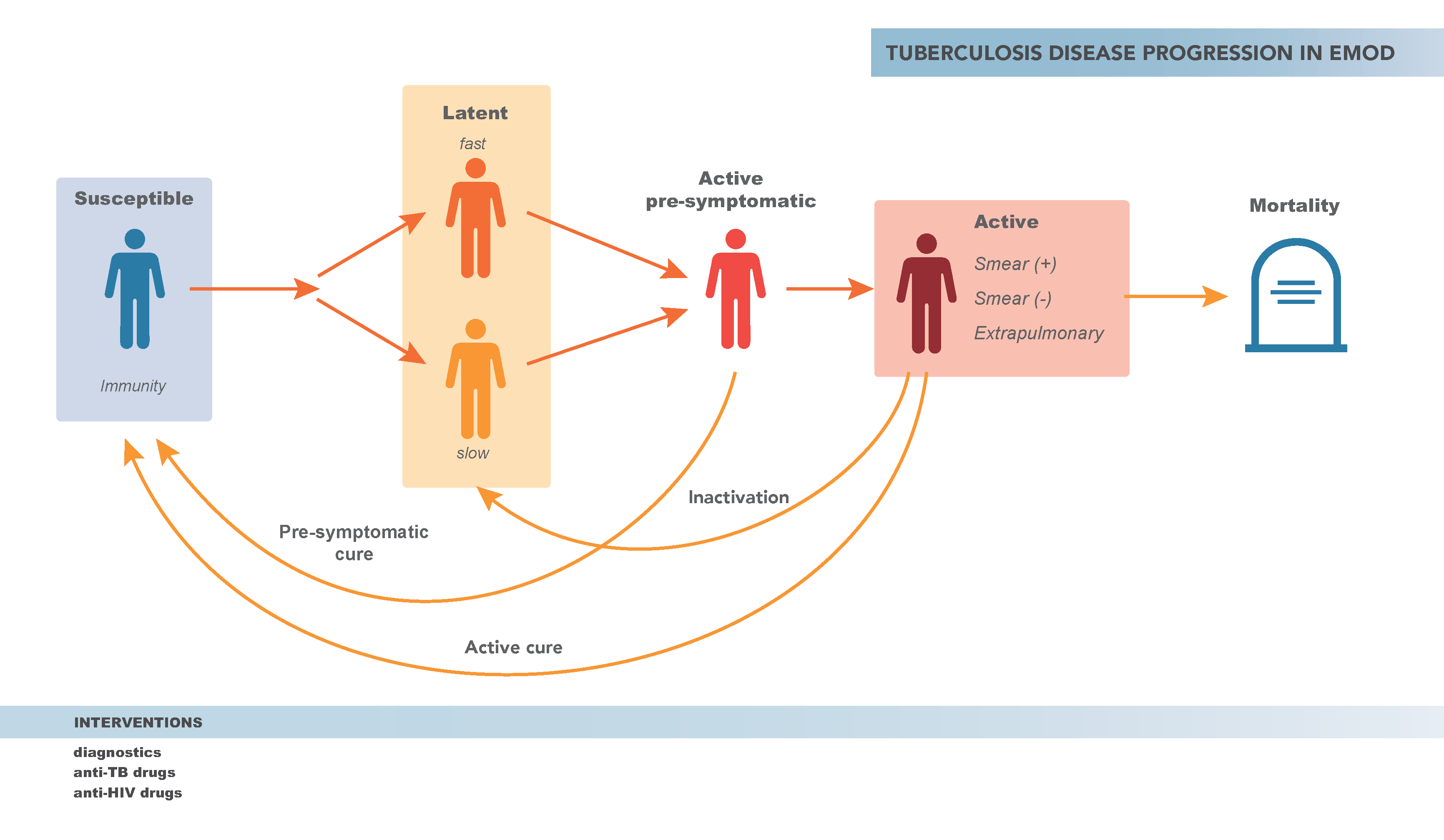Tuberculosis model overview¶
To use the tuberculosis model and gain access to specific TB parameters, the Simulation_Type configuration parameter must be set to TBHIV_SIM. Epidemiological MODeling software (EMOD) represents the progression of TB disease using a series of state changes as individuals progress from susceptible to latent, to active infection, and then to recovery or death. Each agent follows assigned rules based on their state: how quickly the disease progresses, whether the individual is infectious, the presence of symptoms, and more.
EMOD enables you to simulate TB transmission with or without including co-infection with HIV. This model, TBHIV, does not include transmission of HIV; instead, you can enable HIV co-infection, configure the rates of disease progression for co-infected individuals, and set the prevalence of HIV in the population.
The figure below illustrates the main components of the tuberculosis model. HIV co-infection is not labeled on the diagram, but can be included in the model.

Network diagram illustrating the TB model and its constituent components.¶
Because TB progresses slowly and may be latent for years and has many different testing and treatment options based on the symptoms experienced or strain of TB, the TB model includes logic for the speed of disease progression, altering immunity based on age or other factors, case-finding strategies, and navigating health care systems.
For more information on the basics of agent-based modeling with EMOD, see Generic model overview. Many of the fundamentals and features of the generic simulation type are applicable to modeling tuberculosis.